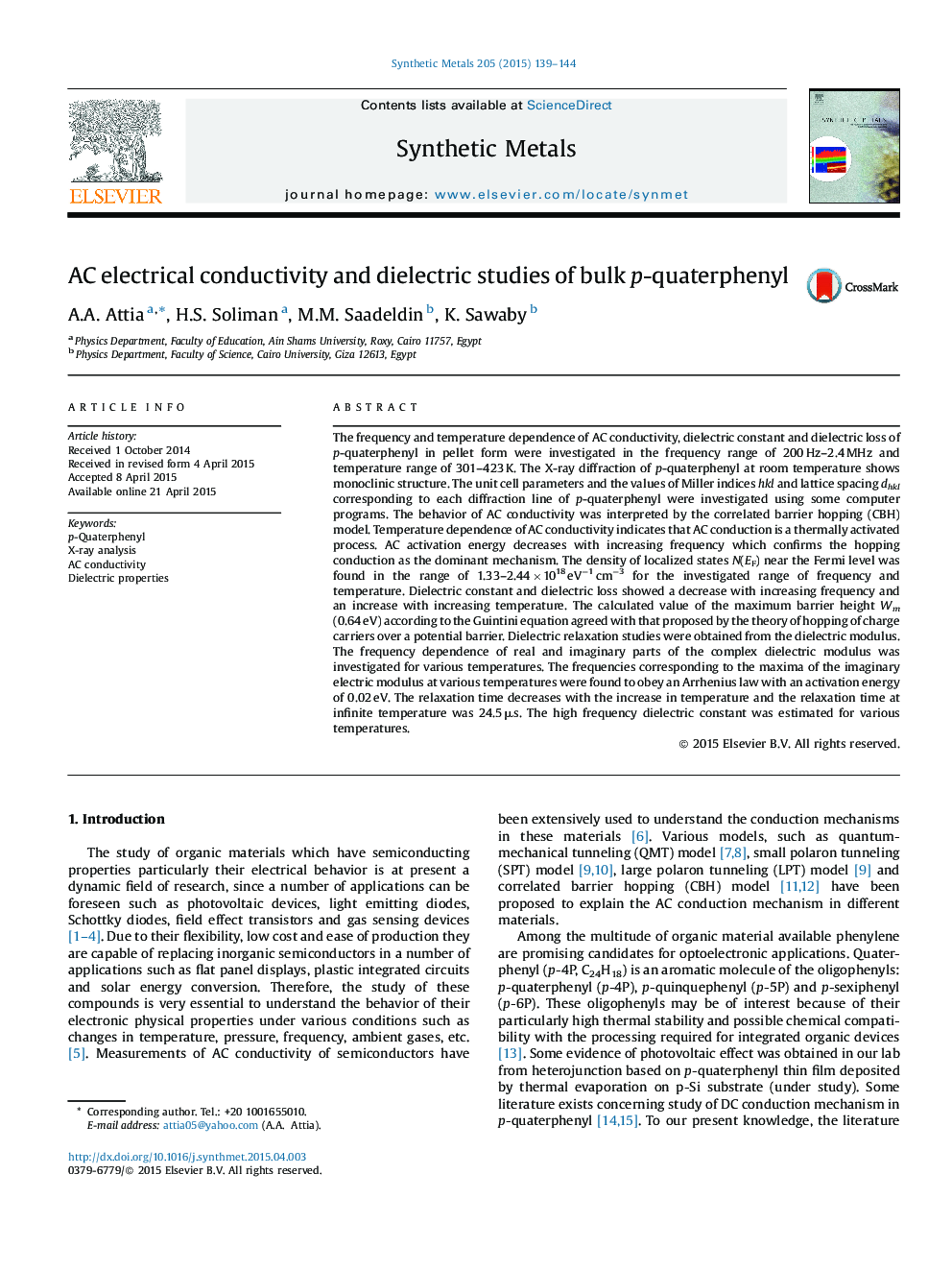| کد مقاله | کد نشریه | سال انتشار | مقاله انگلیسی | نسخه تمام متن |
|---|---|---|---|---|
| 1440410 | 1509372 | 2015 | 6 صفحه PDF | دانلود رایگان |

• Unit cell parameters of p-quaterphenyl.
• Indexing of Miller indices and lattice spacing for diffraction lines of p-quaterphenyl.
• Frequency and temperature dependence of AC conductivity of p-quaterphenyl.
• Frequency and temperature dependence of ϵ1 and ϵ2 of p-quaterphenyl.
• Dielectric relaxation studies of p-quaterphenyl on the basis of dielectric modulus.
The frequency and temperature dependence of AC conductivity, dielectric constant and dielectric loss of p-quaterphenyl in pellet form were investigated in the frequency range of 200 Hz–2.4 MHz and temperature range of 301–423 K. The X-ray diffraction of p-quaterphenyl at room temperature shows monoclinic structure. The unit cell parameters and the values of Miller indices hkl and lattice spacing dhkl corresponding to each diffraction line of p-quaterphenyl were investigated using some computer programs. The behavior of AC conductivity was interpreted by the correlated barrier hopping (CBH) model. Temperature dependence of AC conductivity indicates that AC conduction is a thermally activated process. AC activation energy decreases with increasing frequency which confirms the hopping conduction as the dominant mechanism. The density of localized states N(EF) near the Fermi level was found in the range of 1.33–2.44 × 1018 eV−1 cm−3 for the investigated range of frequency and temperature. Dielectric constant and dielectric loss showed a decrease with increasing frequency and an increase with increasing temperature. The calculated value of the maximum barrier height Wm (0.64 eV) according to the Guintini equation agreed with that proposed by the theory of hopping of charge carriers over a potential barrier. Dielectric relaxation studies were obtained from the dielectric modulus. The frequency dependence of real and imaginary parts of the complex dielectric modulus was investigated for various temperatures. The frequencies corresponding to the maxima of the imaginary electric modulus at various temperatures were found to obey an Arrhenius law with an activation energy of 0.02 eV. The relaxation time decreases with the increase in temperature and the relaxation time at infinite temperature was 24.5 μs. The high frequency dielectric constant was estimated for various temperatures.
Journal: Synthetic Metals - Volume 205, July 2015, Pages 139–144